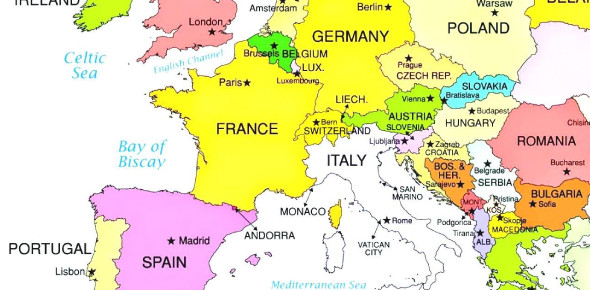Discovering Capitals of Europe: A Tour of Diversity
Capitals of Europe
Europe, known for its rich history, diverse cultures, and stunning landscapes, is home to many countries, each with its unique capital city. Understanding the Capitals of Europe not only enriches our knowledge but also helps us appreciate the continent's geopolitical significance and cultural diversity.
Introduction to European Capitals
Europe comprises 44 countries, each with its own distinctive identity. Learning about the capitals of these countries provides insights into their history, politics, and societal developments. Whether you're a traveler, student, or simply curious about the world, knowing the capitals of Europe is both educational and fascinating.
Western European Capitals
In Western Europe, capitals like London (United Kingdom), Paris (France), Berlin (Germany), and Madrid (Spain) stand as symbols of historical legacies, modernity, and cultural vibrancy. These cities attract millions of tourists annually and serve as vital economic and political centers.
Central European Capitals
Moving to Central Europe, we encounter capitals such as Vienna (Austria), Prague (Czech Republic), and Budapest (Hungary). These cities blend rich histories with contemporary lifestyles, offering visitors a glimpse into Europe's diverse cultural tapestry.
Eastern European Capitals
Eastern Europe boasts capitals like Moscow (Russia), Warsaw (Poland), and Kiev (Ukraine). These cities, with their unique architectures, traditions, and influences, showcase the resilience and evolution of Eastern European societies.
Northern European Capitals
In Northern Europe, capitals such as Stockholm (Sweden), Oslo (Norway), and Helsinki (Finland) are known for their progressive societies, stunning natural landscapes, and high quality of life. These cities exemplify innovation and sustainability.
Southern European Capitals
Heading south, we discover capitals like Rome (Italy), Athens (Greece), and Lisbon (Portugal). These cities blend ancient charm with modernity, offering a fusion of historical sites, culinary delights, and vibrant cultures.
Conclusion
Exploring the capitals of Europe unveils a tapestry of history, culture, and diversity. Each city tells a unique story, reflecting its nation's journey through time. Whether you dream of strolling through Parisian boulevards, admiring the Kremlin in Moscow, or indulging in gelato in Rome, Europe's capitals invite you to embark on a journey of discovery and wonder.

Comments
Post a Comment